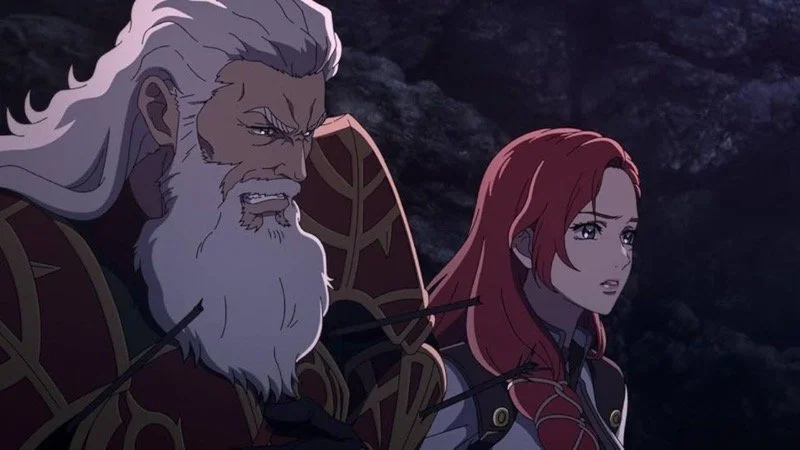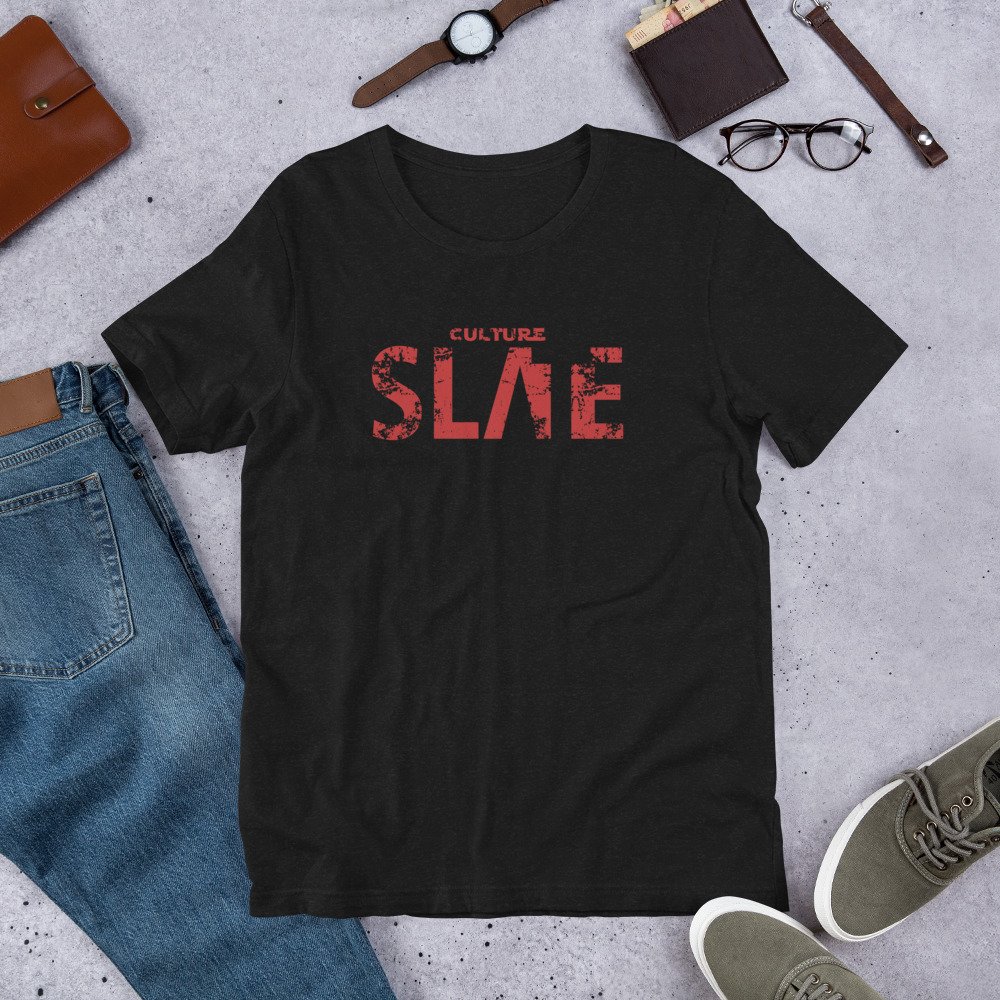'The Lord Of The Rings: The War Of The Rohirrim' Spoiler Review
Image Source: Columbia Cinema
From the moment the music started, we are transported back to Middle-earth, and specifically Rohan. A moment later, Miranda Otto, as Éowyn begins to speak, recounting a legend, a tale of Rohan long past, way before the events in The Lord of the Rings (LotR). And suddenly, fans are home.
The Lord of the Rings: The War of the Rohirrim (WotR) had a mixed reception when it was announced because it was set to be animated in the Japanese anime style, and introduce a female lead who, except for a few small notes from J.R.R. Tolkien’s writings, isn’t even named and isn’t supposed to be a big part of the story. Fans were skeptical. While the LotR team of Peter Jackson, Fran Walsh, and Phillipa Boyens (the latter helping write the screenplay) were back, fans still weren’t sure what this story would look like.
At New York Comic Con in October, fans were treated to a special look at the film, trailer, and panel discussion with director Kenji Kamiyama, producers Philippa Boyens, Jason DeMarco, and Joseph Chou, writers Phoebe Gittins and Arty Papageorgiou along with actors Brian Cox, Luke Pasqualino, and Gaia Wise. Coming out of that panel, you could feel the electricity, the excitement, and the relief that perhaps this film would actually capture Tolkien’s story in a new and unique way. After all, director Kenji Kamiyama did specifically say he wanted to make sure he blended the art style with Tolkien’s writings in a way that paid homage to Tolkien’s greatness.
RELATED:
Image Source: Variety
At the panel, Phillipa commented on how they wanted to find a new protagonist for the story, not just through the eyes of the great Helm Hammerhand. And Tolkien provided them with an intriguing character. While “The Appendices” of The Lord of the Rings doesn’t have the daughter of Helm mentioned in the story that was officially published, Tolkien did toy with the idea elsewhere in his writings, but he never gave her a name or told what happened to her. However, the basics were there. She was the one to help save the Rohirrim in their time of need and to bring Fréaláf, her cousin, to help win the battle. Phillipa said they decided to focus on her because she was different, mysterious, and perfect for the story, and they named her Héra.
Overall, the story sticks pretty well to the one that Tolkien wrote. Obviously, as with any adaptation, there are differences. A couple of the main ones are that in the original tale, Háma died later, and Fréaláf surprised Wulf at Meduseld at the end. However, the changes to the story that were made worked. It helped to speed up the plot a little and added a bit more suspense for a film vs. a written story.
Image Source: Cinebowl
In terms of changing source material, the main changes were just moving around where certain events took place and when and adding to the plot. Since Tolkien was never able to finish expanding on the story, things were needed to flesh out a complete beginning, middle, and end. This movie did a really good job of keeping what was added to the style and feel of Tolkien’s writing and still bringing in the heart of the story despite the differences. It also did a great job tying it into Peter Jackson’s portrayal of the Rohirrim and Helm’s Deep in The Two Towers.
One of the things we see throughout the story is Easter Eggs to LotR. There are a lot of lines that are so similar, or the same, as those said in the LotR films. And there were a few scenes that didn’t necessarily need to be there. Sort of, anyway. There’s a scene with two orcs (played by Billy Boyd (Pippin in LotR) and Dominic Monaghan (Merry in LotR) incidentally) discussing how Mordor is looking for rings. In the grand scheme of the movie, since the movie felt so much like its own standalone story, that scene did not need to be in there. It almost felt like filler or out of place, albeit it did move the plot along in the end and filled in some gaps. Tolkien never wrote this in the original story. However, if you look at it from the point of view that this story is part of a bigger story, then it is very nicely put foreshadowing and does ultimately work. Although, the story could have worked fine without it as well, just by changing around a few things.
The animation is one of the most talked about things with this film because, even though the original LotR and The Hobbit movies were animated by Rankin and Bass in the 1970s, people don’t tend to associate LotR with animation, especially not anime style. Overall, the animation is beautiful. Yes, it is choppy and not smooth at points, like we’re used to, which is what a lot of people are talking about, but the animation was not done by a computer. It was all hand-drawn anime-style animation, done the way it was originally done for years. This means that it is going to be choppier than the average anime or animated film that audiences today are used to. This is also, incidentally, why there are a lot of shots of horses from the chest up. It is insanely hard to animate horse legs, especially running, and it costs a lot of money to do so. Phillipa commented on that during the NYCC panel.
Image Source: thelordoftherings.net
The choppy, not smooth, anime style only took about 10 minutes or so to get used to. The same thing happened to many fans when they saw Into the Spiderverse because that, too, is done in a choppier style than our eyes and brains are used to. It’s very much akin to the original Spirit movies or a Miyazaki film. This does mean that people who are more well-versed in that art style or used to watching it are going to be able to adjust better to watching this type of animation. People who aren’t might have a harder time. It would be nice if the animation was a tad less choppy and smoother, especially for certain scenes where it got a little distracting, but the story did quickly pull you in again.
There were also several scenes where the point-of-view suddenly shifted to almost a first-person kind of look. These were a little jarring at times, but thankfully, they weren’t done too often. The main one was during the scene in the forest when the swamp Watcher shows up. A lot of time is spent just panning across the lake. However, one must remember that this film is not technically a Western film and isn’t done in the same style as Hollywood, where every second counts. Many non-Western films, and especially Japanese filmmaking, focus on the small moments more than what we’re used to. Particularly moments in nature. In this particular scene, even though it felt odd at first, the panning across and Héra’s panting in the background helped to build the tension, even though it seemed long and different.
The first-person was a little odd because it was only done a handful of times near the beginning and middle, and then wasn’t done much after that. Every time it happened, it did take me out of the story because it was different, but it wasn’t necessarily bad. It was odd how it wasn’t consistent, though, which almost makes it seem like it was a choice that wasn’t technically needed for the film and just added artistic value. The film would have been just fine without those first-person scenes in it.
One of the criticisms seen online was the inclusion of Saruman/Christopher Lee’s voice. In Tolkien’s writings, Saruman does come to Fréaláf’s coronation. And, because Warner Brothers has the rights to the films, they were able to use a line that Christopher Lee recorded for Saruman for a past film and did not use AI to recreate his iconic voice. It was a nice touch and fun to see. Also, in the credits of the film, near the end, they give tribute to Bernard Hill, who played King Théoden of Rohan in the LotR films, which was also a nice touch to see.
The music, composed by Stephen Gallagher, was a nice blend of Howard Shore’s magnificent themes of Rohan and the films and bringing his own melodic renditions to a beautiful score. It transports the viewer into the film in just the same way as Shore and Bear McCreary, composer for The Rings of Power, does. The soundtrack is topped off by an original song in the credits by Paris Paloma.
Image Source: IGN
The last point to comment on is Héra herself. It was refreshing to see a female character, particularly a lead, who was bold but not overbearing or in the sense of trying to take over the story. She doesn’t have huge character growth, but she does realize, throughout the film, that she becomes more sure of who she is and what she can do to help her people. She wasn’t a forced female character, like some can be. She was just a great example of a female lead who does step back when she needs to for others to do what they do but steps up when the time is needed for her to. For example, when she orders the evacuation of Edoras or realizes that she has to put an end to this and trust the eagles and face Wulf. It felt natural for her to be a main character in the story, and she was a wonderful precursor to Éowyn and showed just how strong the females of Rohan can be.
Overall, The War of the Rohirrim was good. It was refreshing to see a new and unique story done in a style that most people wouldn’t normally think of when they think of Tolkien, but, despite a few things, it was done well.
Rating: 7.5/10.
READ NEXT:

















